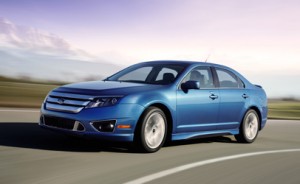Ford cars were up 43 percent, crossovers were up 20 percent, sport utilities were up 8 percent, and trucks and vans were up 14 percent.
Plus, every consumer metric about the Ford brand – including favorable opinion, consideration, shopping and intention to buy – ended the year at record levels. Last year, favorable opinion improved 27 percent and intention to buy Ford increased 30 percent.
Among full-line manufacturers, Ford, Lincoln and Mercury vehicles recorded the largest gain in resale values from the 2009 to 2010 model year. The projected resale value of Ford vehicles increased by more than $1,300 per vehicle. Ford already holds a resale value advantage over its U.S.-based competitors, and it continues closing the gap on key imports with some Ford vehicles already having surpassed competing foreign vehicles.
“Resale value is a key indicator of brand health and an important contributor to the total value equation,” said Ken Czubay, Ford vice president, U.S. Marketing Sales and Service. “Fleet managers monitor vehicle operating costs very carefully.” In January, Ford sales to fleet customers increased 154 percent over January 2009..
Ford posted gains in every fleet market – commercial, government and rental. On an annual basis, a majority of Ford’s fleet sales are to commercial and government customers where the Ford F-Series truck and Econoline van have long been top sellers. Today, products such as Fusion, Taurus and Escape are popular choices among fleet customers.
Ford Fusion, recently named Motor Trend’s Car of the Year, posted a January sales increase of 49 percent. The Fusion Hybrid recently was named North American Car of the Year. Clean Fleet Report’s Top 10 Hybrids for 2010 include the Fusion Hybrid and the Escape Hybrid.
2009 was a major turn-around year for Ford with a full year net income of $2.7 billion, a $17.5 billion improvement from a year ago. For is increasing revenues as it increases market share. Ford reduced costs $5 billion in 2009. Margins will increase as Ford gets closer to global cars with common chassis and many common parts. The new Ford Focus is a good example.
In the future, Ford will increase customer choice with more models being made available with efficient engines, or as hybrids cars, plug-in hybrids, or battery electric cars.

